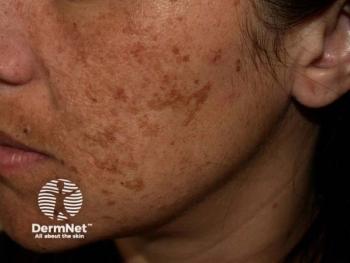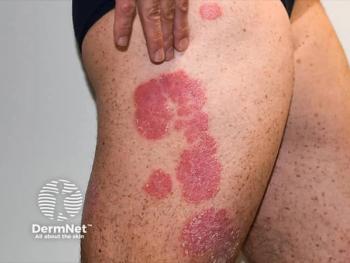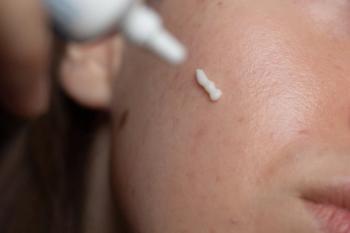
FDA Opens Access to Over 200 CRLs
Key Takeaways
- The FDA's publication of CRLs aims to enhance transparency and provide insight into decision-making and common deficiencies in drug applications.
- CRLs are issued for various reasons, including safety, efficacy, and manufacturing concerns, and detail deficiencies with recommendations for resolution.
FDA enhances transparency by publishing over 200 Complete Response Letters, offering insights into drug approval processes and common deficiencies.
Today,
“By making the CRLs available, the public now has significantly greater insight into the FDA’s decision-making and the most common deficiencies cited that sponsors must address before their application is approved,” the FDA said in a news release.
"In the world of drug development, transparency is critical for all parties involved - industry, clinicians, patients, and regulators. The recent publishing of complete response letters from the last 5 years is a bold and surprising move by the FDA, our main regulatory gatekeeper when it comes to the approval of new drugs," clinical associate professor at the Rosalind Franklin University Chicago Medical School, founder and director of the Center for Medical Dermatology and Immunology Research in Chicago, and a Dermatology Times Editorial Advisory Board member, Raj Chovatiya, MD, PhD, MSCI, FAAD, told Dermatology Times. One can surmise that the intention of this decision is to provide clarity surrounding drug application decisions that have been made by the FDA in recent years, and I am hopeful that in the long run, open communication of this kind of information will be used to strengthen the relationship between the FDA and drug developers, instill public trust in the regulatory process, and help demystify the world of pharmaceutical regulatory approval.
CRLs are issued when the FDA completes its review cycle and are sent directly to sponsors. They determine that an approval cannot be granted of an application in its current form. Recently in the world of dermatology, the FDA approved dupilumab for adolescents and adults with H1 Antihistamine-refractory chronic spontaneous urticaria (CSU), despite an October 2023 CRL stating that additional efficacy data were needed to support approval. In response to this CRL, Regeneron and Sanofi resubmitted the supplemental Biologics License Application (sBLA) including updated efficacy and safety data from a third phase 3 trial –
The FDA can issue CRLs for various reason, most related to safety and efficacy concerns, manufacturing deficiencies, and bioequivalence issues. In the case of dupilumab for CSU, while additional efficacy data was requested the agency did not identify any concerns regarding safety or manufacturing. CRLs detail any deficiencies and may also include recommendations for addressing them.
In another case concerning prademagenezamikeracel (pz-cel) for the treatment of recessive dystrophic epidermolysis bullosa,
“For far too long, drug developers have been playing a guessing game when navigating the FDA,” said FDA Commissioner Marty Makary, MD, MPH, in the release. “Drug developers and capital markets alike want predictability. So today we’re 1 step closer to delivering it to them, with an ultimate goal of bringing cures and meaningful treatments to patients faster.”
The agency said that because the FDA has historically refrained from publishing CRLs for pending applications, it feels sponsors often misrepresent the rationale behind the FDA’s decision to their stakeholders and the public. According to a 2015 analysis conducted by FDA researchers, they stated sponsors avoided mentioning 85% of the FDA’s concerns about safety and efficacy when publicly announcing that their application was not approved. Moreover, the agency noted that when it calls for a new clinical trial for safety or efficacy, that critical information remains undisclosed around 40% of the time. Finally, the FDA stated that lessons learned from these non-approvals are not shared within the industry, ultimatly leading to companies repeatedly making similar mistakes.
The initial batch of published decision letters associated with since-approved applications is now accessible and open to the public at
References
- FDA embraces radical transparency by publishing complete response letters. News Release. US FDA. Published July 10, 2025. Accessed July 10, 2025.
https://www.fda.gov/news-events/press-announcements/fda-embraces-radical-transparency-publishing-complete-response-letters?utm_medium=email&utm_source=govdelivery - Andrus E, Hebebrand M. FDA approves dupilumab for adolescents and adults with H1 antihistamine-refractory chronic spontaneous urticaria. News article. Dermatology Times. Published April 18, 2025. Accessed July 10, 2025.
https://www.dermatologytimes.com/view/fda-approves-dupilumab-chronic-spontaneous-urticaria - Andrus E. FDA sets PDUFA date, accepts BLA submission for pz-cel in epidermolysis bullosa. News article. Dermatology Times. Published November 12, 2024. Accessed July 10, 2025.
https://www.dermatologytimes.com/view/fda-sets-pfuda-date-accepts-bla-submission-for-pz-cel-in-epidermolysis-bullosa - Hebebrand M. FDA approves first gene therapy for RDEB. News article. Dermatology Times. Published April 29, 2025. Accessed July 10, 2025.
https://www.dermatologytimes.com/view/fda-approves-first-gene-therapy-for-rdeb
Newsletter
Like what you’re reading? Subscribe to Dermatology Times for weekly updates on therapies, innovations, and real-world practice tips.


















